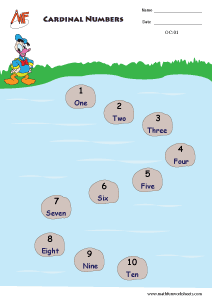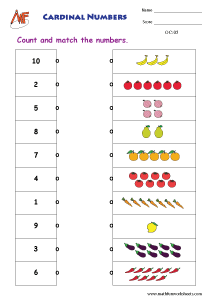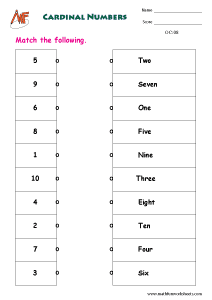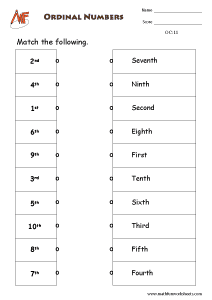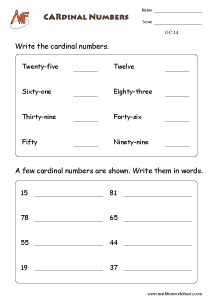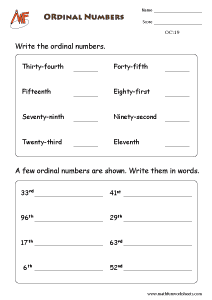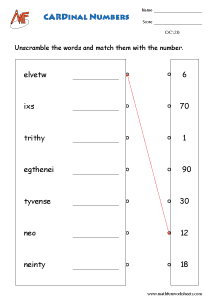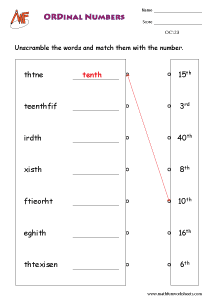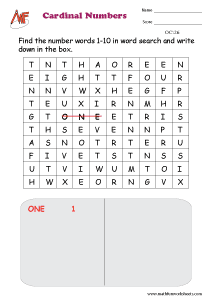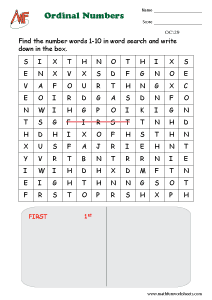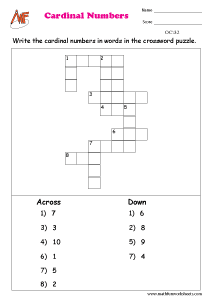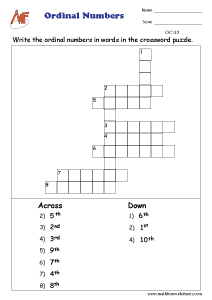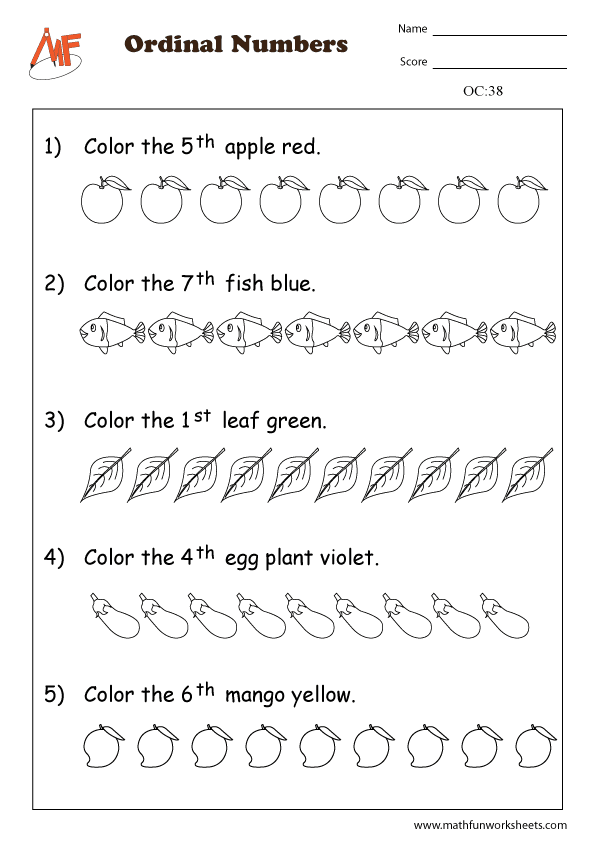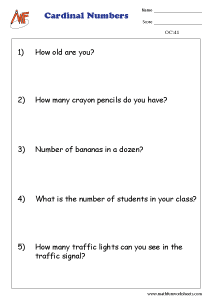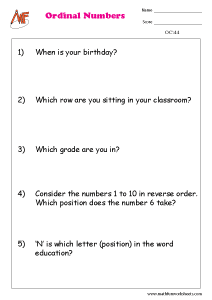- Home
- Numbers & Operations
- Cardinal & Ordinal Numbers
Browse by Topics
- English Worksheets
- Science Worksheets
- Kid's Corner
- Numbers & Operations
- Addition
- Subtraction
- Multiplication
- Division
- Decimals
- Place Value
- Roman Numerals
- Skip Counting
- Odd & Even Numbers
- Patterns
- Cardinal & Ordinal Numbers
- Rounding Numbers
- Estimation of Numbers
- Estimation of Time & Money
- Counting & Cardinality
- Comparing Numbers
- Ordering Numbers
- Fractions
- Prime & Composite Numbers
- Squares & Cubes
- Square & Cube Root
- Divisibility Rules
- Factors & Multiples
- Data Handling
- Algebra
- Ratio
- Least Common Factor
- Greatest Common Factor
- Percent Worksheets
- Proportion
- Order of Operations
- Scientific Notation
- Exponents
- Algebraic Expressions
- Evaluating Algebraic Expressions
- Simplifying Algebraic Expressions
- Graphing Lines
- Point Slope Form
- Two Point Form
- Two Intercept Form
- Equations
- Identifying Functions
- Evaluating Functions
- Function Table
- Domain and Range
- Trigonometric Charts
- Quadrants
- Polynomials
- Measurement
- Geometry
- Word Problems
Cardinal & Ordinal Numbers worksheets
Understanding cardinal & ordinal numbers is a key part of early math learning. Cardinal numbers (like 1, 2, 3) tell us how many, while ordinal numbers (like 1st, 2nd, 3rd) show position or order. Teaching both concepts together helps children count, compare, and organize information more effectively. These skills are essential for reading instructions, following directions, and understanding sequences in daily life.
To make learning fun and interactive, start with visual charts that show the difference between cardinal and ordinal numbers using real-life examples—like birthday candles for counting and race positions for order. These visuals give kids a clear, easy-to-understand reference.
Next, try matching activities where students pair objects with their correct position or quantity. For instance, matching “3rd” with the third cupcake or “5” with five apples helps reinforce the concept in a hands-on way.
Additionally, crossword puzzles are a creative way to build vocabulary and number recognition. Use clues like “the number after second” or “how many legs on a spider” to encourage kids to think critically and apply what they’ve learned.
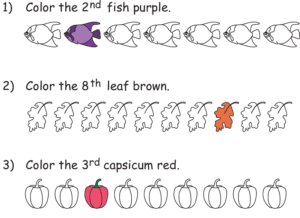
For artistic learners, coloring pages can be both relaxing and educational. Have children color the fifth balloon blue or shade in a group of four stars. These activities combine number identification with creativity and fine motor skills.
Printable worksheets free download pdf
Match the Cardinals (Pictures)

Match the Cardinals (Pictures)
Unscramble the Cardinal numbers

Unscramble the Cardinal numbers
Unscramble the Ordinal numbers

Unscramble the Ordinal numbers
Cardinal numbers Word Problems

Cardinal numbers Word Problems
Finally, include simple word problems that use both the numbers. Questions like “Sam has five marbles. He gave the second one to his friend. How many are left?” help learners apply their knowledge in practical ways.
By mixing visual aids, games, and creative tasks, you can make learning about numbers enjoyable and meaningful. With regular practice and fun activities, children will confidently use both concepts in everyday situations.

